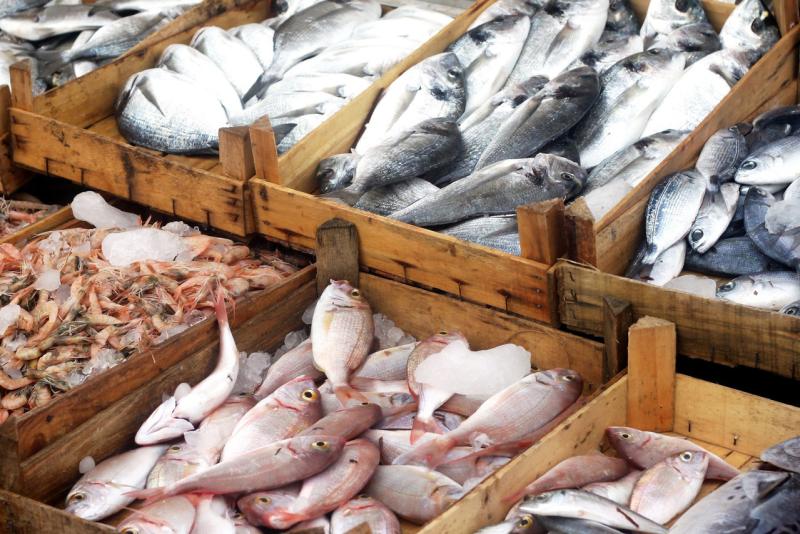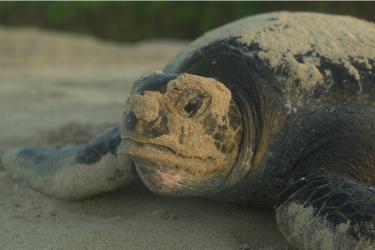NOAA Fisheries has released a report on its implementation of the United States’ risk-based seafood traceability program for thirteen imported species groups. These groups comprise more than 1,100 unique species that were identified as vulnerable to illegal, unreported and unregulated (IUU) fishing and seafood fraud.
The Report on the Implementation of the U.S. Seafood Import Monitoring Program (pdf, 18 pages) captures program data and efforts for the first two years of the program’s operation (2019 and 2020). It provides valuable insight into the early growth of the program and an analysis of its implementation to date. It provides a status of audits and enforcement activities, and shares our future plans to further implement the program. It also highlights areas of significant success in its mission to identify and deter IUU fish and fish products from entering the U.S. market.
Implementation of Seafood Import Monitoring Program
SIMP serves as a screening and deterrent tool to identify and deter IUU fish and fish products and misrepresented seafood from entering the U.S. market. It came into full effect for all 13 species groups on December 31, 2018. The data SIMP collects allows us to trace fish and fish products from the point of harvest or production to their entry into the U.S. market.
Engagement
From 2016 to 2018, NOAA Fisheries engaged in extensive and targeted outreach with importers, international trading partners, and other affected parties on how to comply with SIMP. Due to these efforts, the report notes that the implementation of SIMP did not cause any significant trade disruptions. This is a significant result as these 13 species groups include more than 1,100 unique species.
Innovative Applications of SIMP Data
The program’s core mission is the validation of legal harvest of imported fish and fish products. However, the report notes several new and notable values of SIMP traceability data for the U.S. seafood industry, including:
- Deeper understanding of imports at a species level. SIMP requires reporting of scientific species name at the time of import, which facilitates in-depth analysis of imports by species rather than general species groups or tariff codes.
- An examination of seafood supply chain complexities. Analysis of SIMP data can offer new insights into the details of seafood supply chains. (For example, the report examined imports of cod by identifying the percentage harvested in U.S. waters.)
The application of this data could add significant value to the development and implementation of U.S. fisheries management and trade policies.
Audits
The report notes the majority of SIMP audited shipments were in compliance. SIMP conducts randomly selected audits to verify harvest and landing information from an importer’s entry filings and chain-of-custody records (the documentation of the movement of fish and fish products). Nearly 60 percent (57.3) of SIMP shipments audited were in full compliance. Of those not in full compliance, the approximately 40 percent (42.7) remaining were mostly identified as data discrepancies. Noncompliance issues were addressed directly with the importers, if appropriate—with only a small number warranting enforcement action by NOAA Fisheries’ Office of Law Enforcement.
Future of SIMP
Imports from the various SIMP-covered species groups are often harvested through hundreds of wild capture and aquaculture sources globally. Additionally, the identification of IUU fish and fish products and misrepresented seafood frequently require specific detailed knowledge of many harvesting countries' fisheries laws. This volume warrants additional support of the SIMP infrastructure.
Moving forward, the report notes further investments NOAA Fisheries is undertaking to modernize and integrate the IT infrastructure supporting SIMP. These changes will allow the program to reach its full potential. They include:
- Using predictive analytics to better identify risk factors and trends
- Developing a public interface to streamline document submission while maintaining a secure, encrypted process
- Enhancing reporting and data analytics capabilities
NOAA Fisheries is committed to the programmatic and regulatory development and enhancement of SIMP as part of our comprehensive approach to combating IUU fishing and seafood fraud.
Report on the Implementation of the U.S. Seafood Import Monitoring Program (PDF, 18 pages)



